“Task for today: think of your favourite place where you used to play when you were about 5 years old.” According to sustainable architect Anna Heringer, this is the first step to design sensibly.
The response given by the 10+ participants to her workshop at Boisbuchet 2019 (including Domus) was more or less the same, no matter the age, origins or gender: a niche where to hide, where to have control over the space without being seen, with a soft/filtered light, possibly set in nature – high above on a tree or down below a table.
If these were our primal needs back in the days – when we had little superstructures in our minds – they must be the ones we should look at when designing a space for humans.
That said, lets discover the fundamental steps of “Clay Storming”, her design method which is open to everyone, kids included. There is no need for paper, pencils, Autocad, SketchUp or Rhino, just your hands and clay.
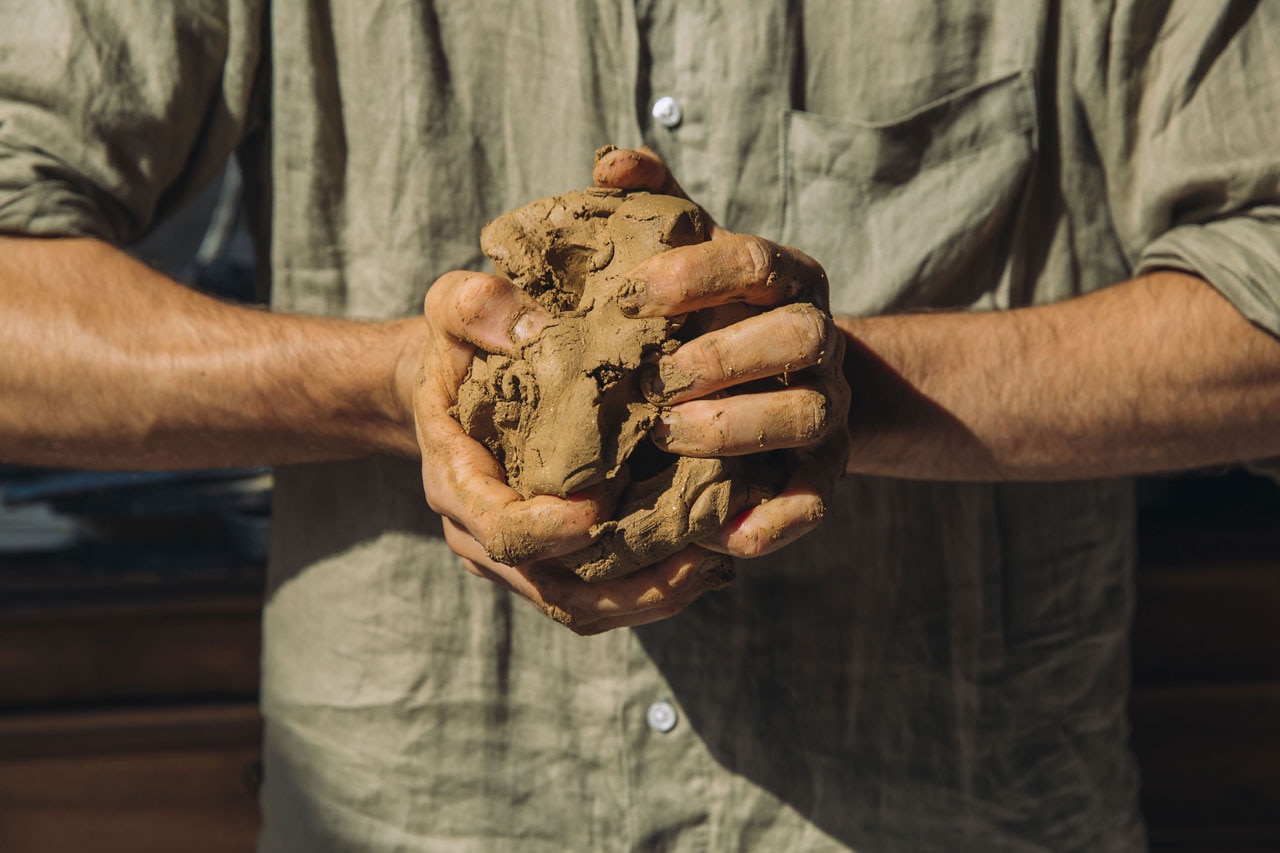
 View gallery
View gallery

Clay Storming
Clay Storming workshop with Anna Heringer, Domaine de Boisbuchet, 2019. Photo Martina Orska
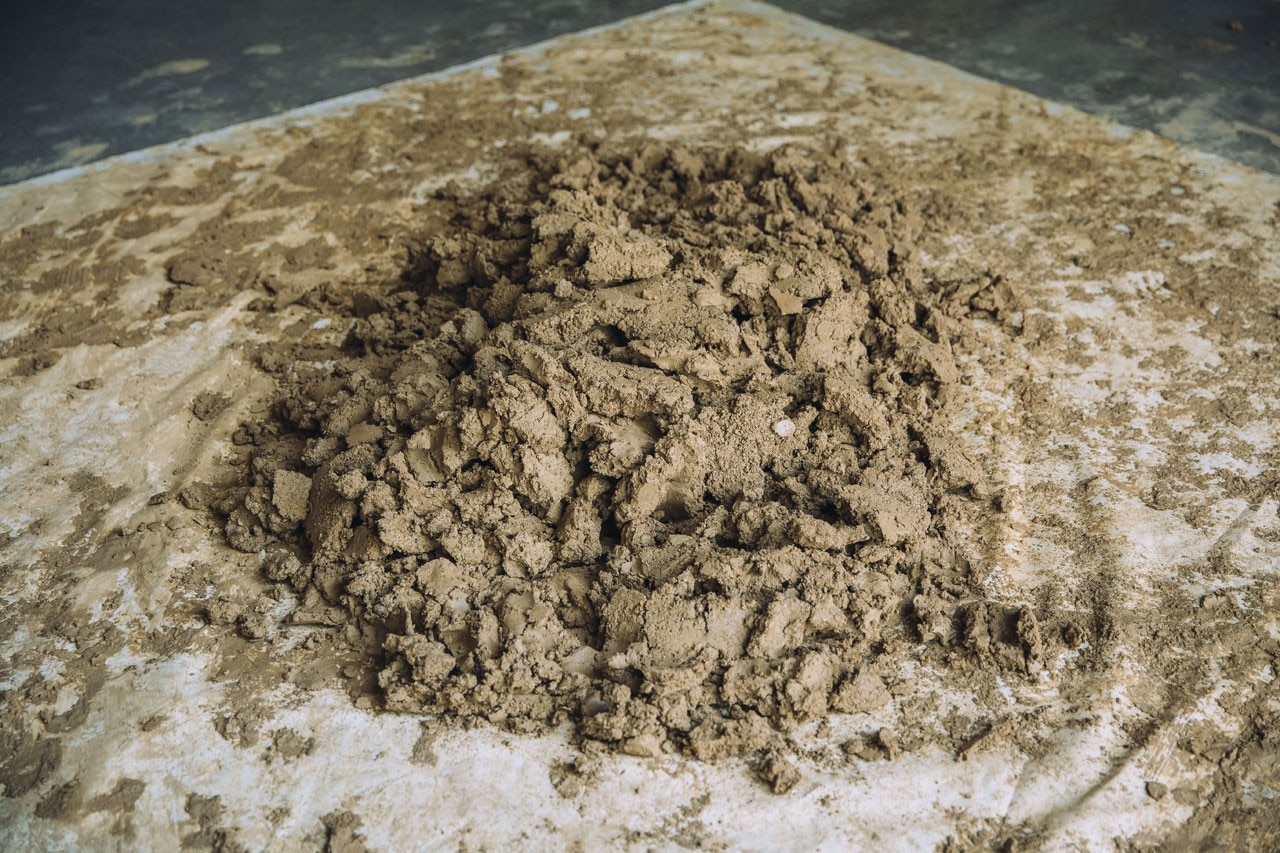
Clay Storming
Clay Storming workshop with Anna Heringer, Domaine de Boisbuchet, 2019. Photo Martina Orska
Clay Storming
Clay Storming workshop with Anna Heringer, Domaine de Boisbuchet, 2019. Photo Martina Orska
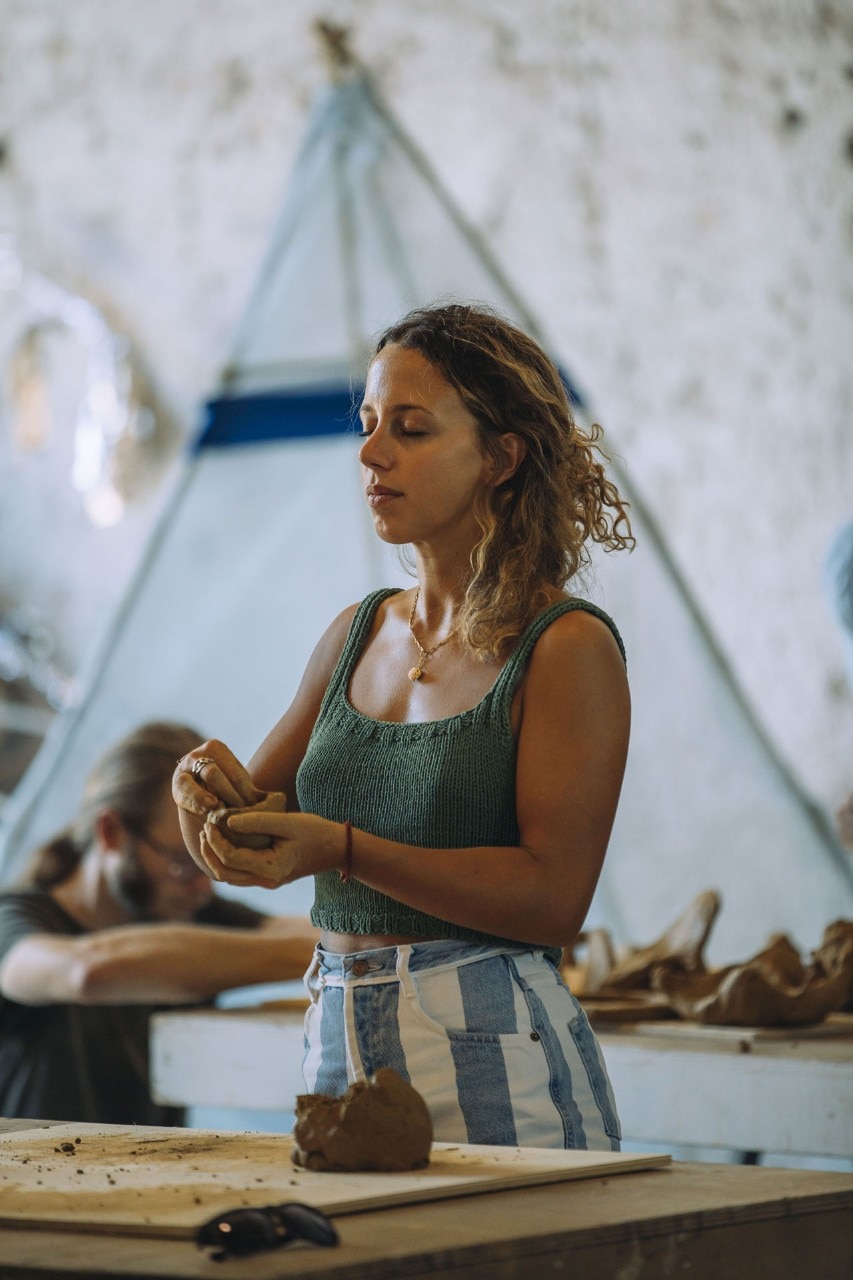
Clay Storming
Clay Storming workshop with Anna Heringer, Domaine de Boisbuchet, 2019. Photo Martina Orska
Clay Storming
Clay Storming workshop with Anna Heringer, Domaine de Boisbuchet, 2019. Photo Martina Orska
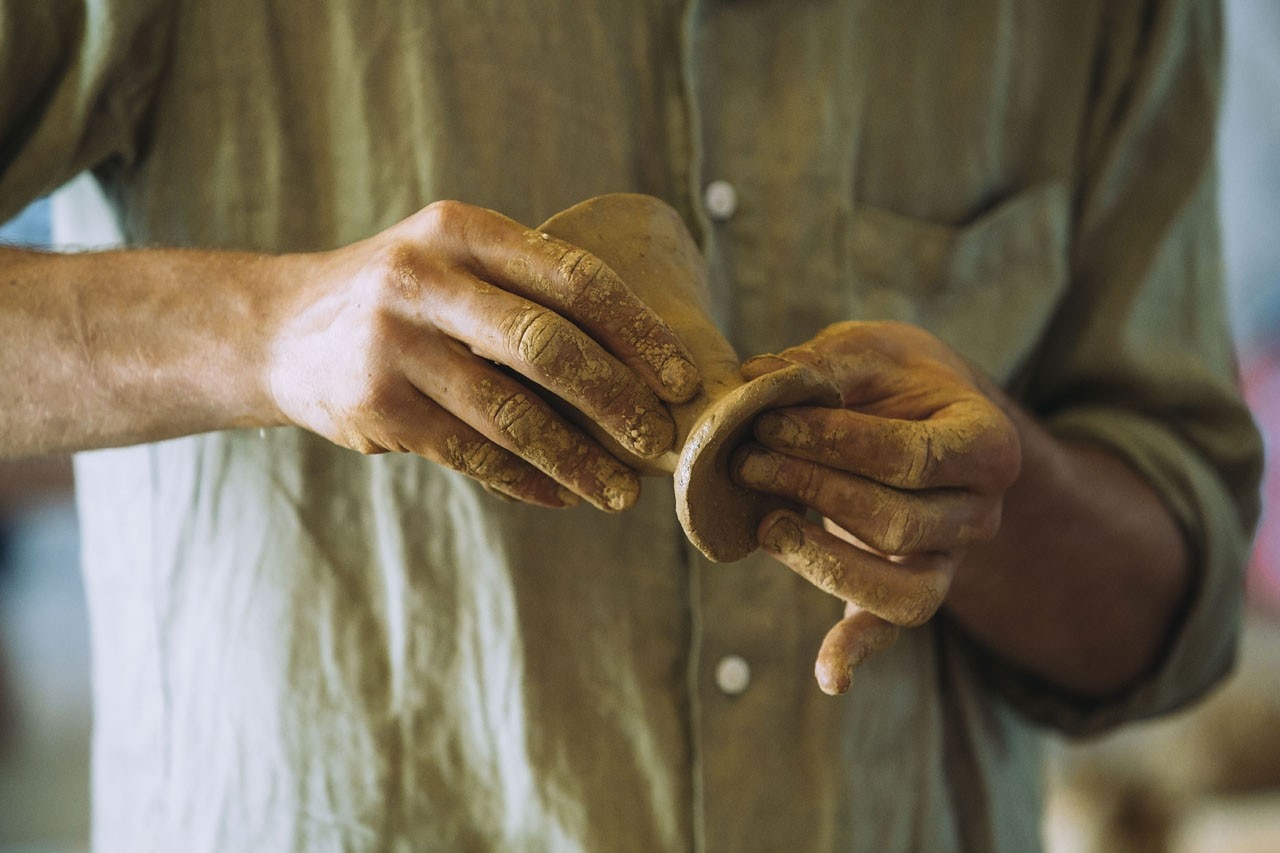
Clay Storming
Clay Storming workshop with Anna Heringer, Domaine de Boisbuchet, 2019. Photo Martina Orska
Clay Storming
Clay Storming workshop with Anna Heringer, Domaine de Boisbuchet, 2019. Photo Martina Orska
Clay Storming
Clay Storming workshop with Anna Heringer, Domaine de Boisbuchet, 2019. Photo Martina Orska
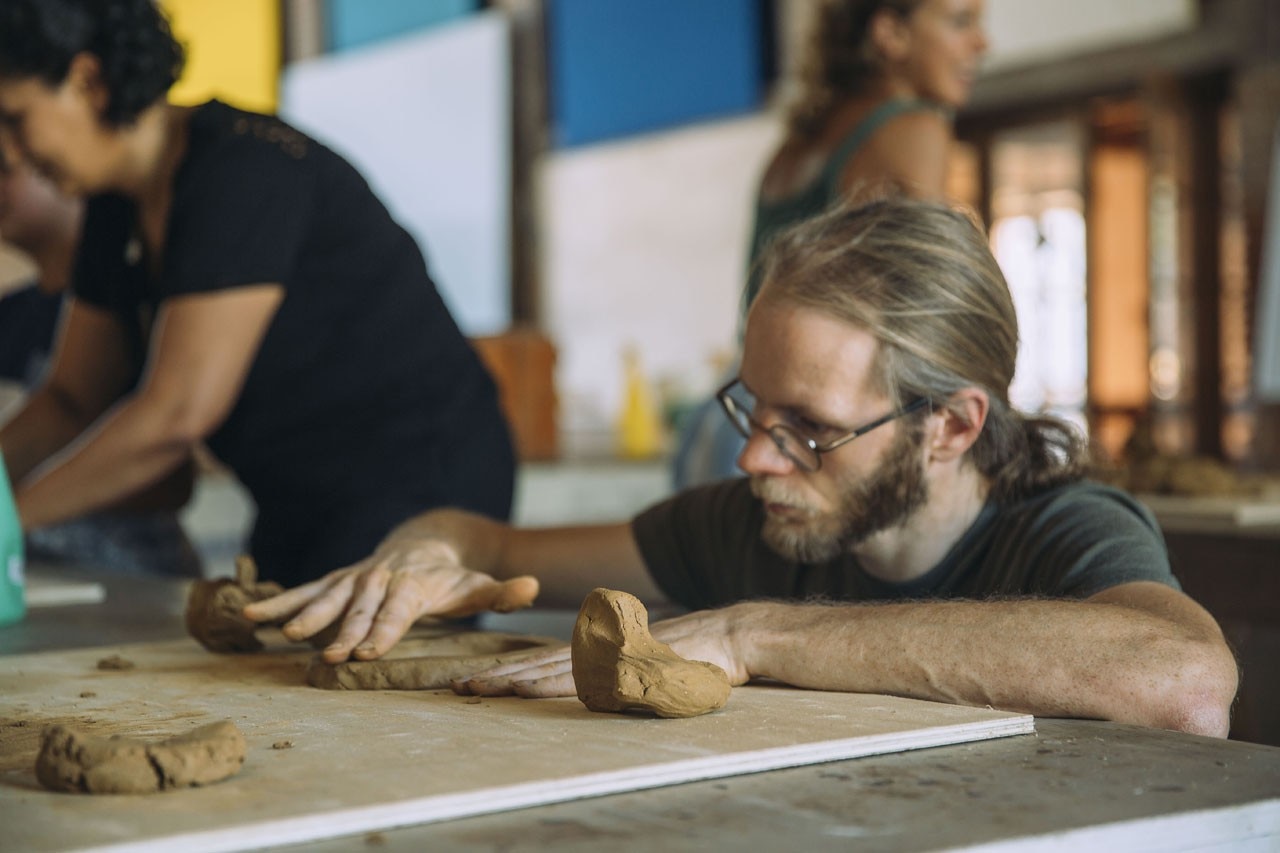
Clay Storming
Clay Storming workshop with Anna Heringer, Domaine de Boisbuchet, 2019. Photo Martina Orska
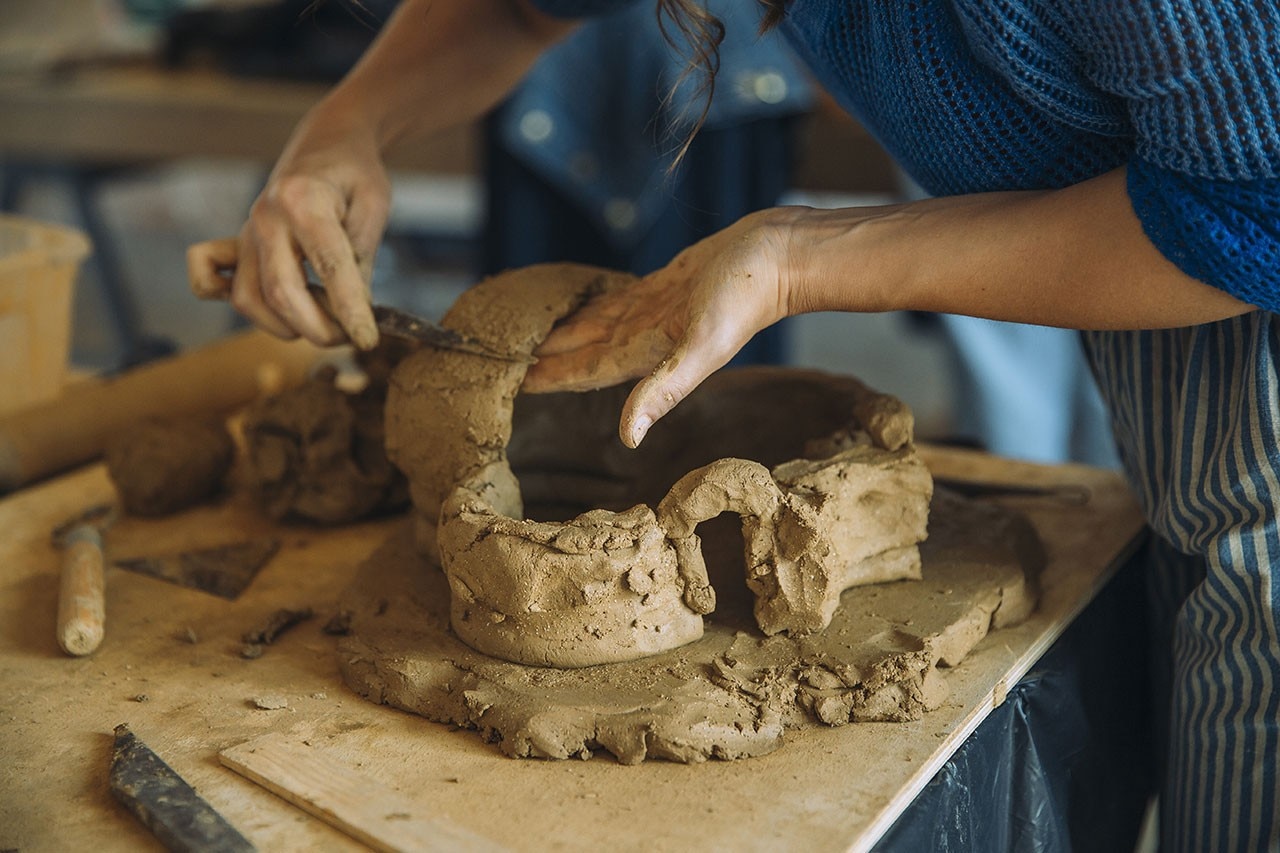
Clay Storming
Clay Storming workshop with Anna Heringer, Domaine de Boisbuchet, 2019. Photo Martina Orska
Clay Storming
Clay Storming workshop with Anna Heringer, Domaine de Boisbuchet, 2019. Photo Martina Orska
Clay Storming
Clay Storming workshop with Anna Heringer, Domaine de Boisbuchet, 2019. Photo Martina Orska

Clay Storming
Clay Storming workshop with Anna Heringer, Domaine de Boisbuchet, 2019. Photo Martina Orska

Clay Storming
Clay Storming workshop with Anna Heringer, Domaine de Boisbuchet, 2019. Photo Martina Orska

Clay Storming
Clay Storming workshop with Anna Heringer, Domaine de Boisbuchet, 2019. Photo Martina Orska

Clay Storming
Clay Storming workshop with Anna Heringer, Domaine de Boisbuchet, 2019. Photo Martina Orska

Clay Storming
Clay Storming workshop with Anna Heringer, Domaine de Boisbuchet, 2019. Photo Martina Orska

Clay Storming
Clay Storming workshop with Anna Heringer, Domaine de Boisbuchet, 2019. Photo Martina Orska

Clay Storming
Clay Storming workshop with Anna Heringer, Domaine de Boisbuchet, 2019. Photo Martina Orska

Clay Storming
Clay Storming workshop with Anna Heringer, Domaine de Boisbuchet, 2019. Photo Martina Orska

Clay Storming
Clay Storming workshop with Anna Heringer, Domaine de Boisbuchet, 2019. Photo Martina Orska

Clay Storming
Clay Storming workshop with Anna Heringer, Domaine de Boisbuchet, 2019. Photo Martina Orska

Clay Storming
Clay Storming workshop with Anna Heringer, Domaine de Boisbuchet, 2019. Photo Martina Orska

Clay Storming
Clay Storming workshop with Anna Heringer, Domaine de Boisbuchet, 2019. Photo Martina Orska
1. Close your eyes
After blending and softening the clay by hand, take a piece of it and try to make a cup using your thumb, starting from a sphere you hold in the other hand. Most likely, you will apply your aesthetic values severely while doing it, forcing yourself to accept or dislike the final result, overthinking what should be a good design. Now, take another piece, close your eyes, and make another cup.
This allows you to concentrate on some very important aspects that include the tactile experience, balance, weight, surface and shape. When you will open your eyes again, you will be surprised by the result. The last step is to combine both techniques, starting with your eyes closed. When you feel the object is good enough open them and make those corrections your rationality will ask for. Just don’t be too severe on yourself and trust what comes from your inside.
2. Design your dream space
Let’s move to the design phase. Your ideal space should include some of those features you acknowledged while meditating on your childhood's favourite spot. Take your time to model it by hands: you can use simple tools to cut, shape, press and punch to create patterns. Unlike cardboard and wood, clay models can be reshaped and modified any time: just don’t be afraid to make a change if you realize you’ve made a bad choice. Take a picture, instead, to record all the steps.
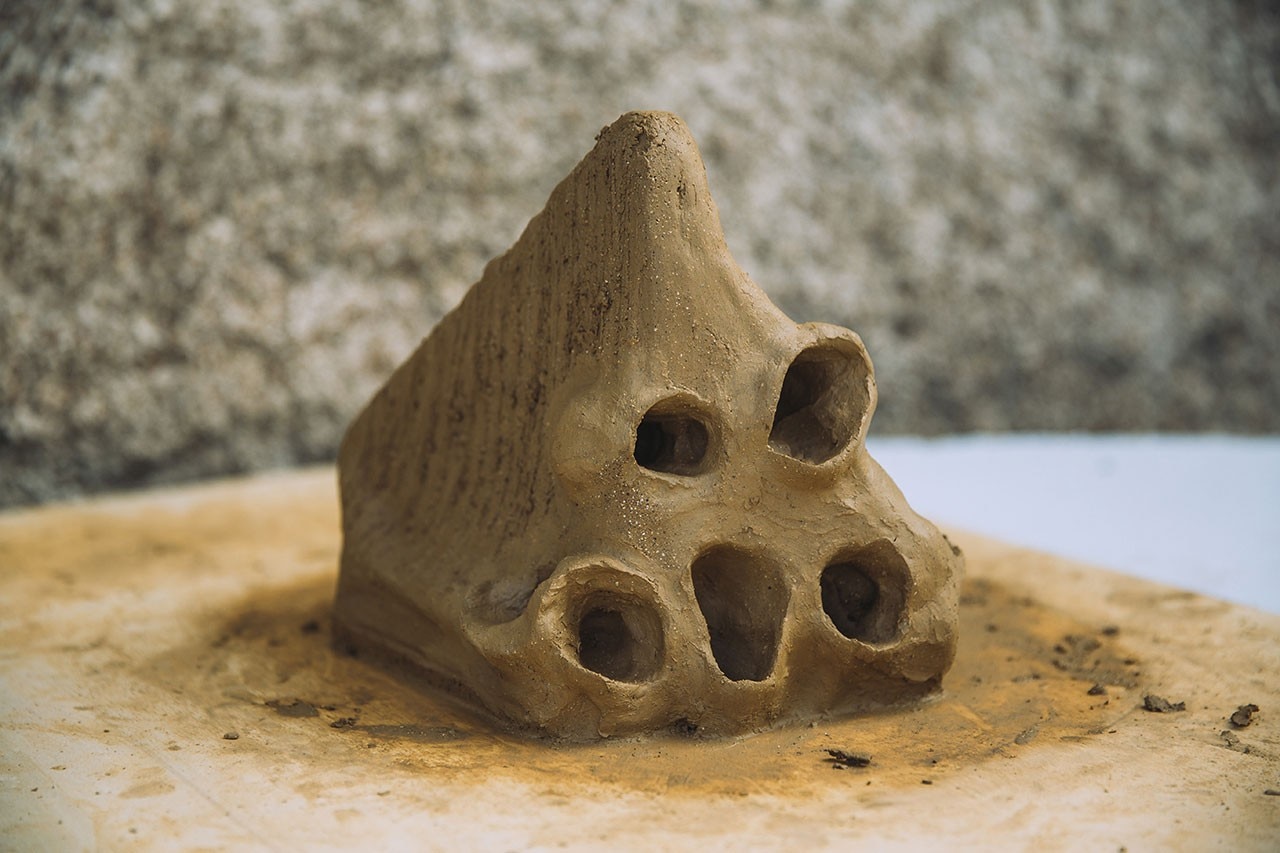
3. Let Shiva in
After a good hour of work, where you’ve put your soul into your architectural model, ask someone to energetically destroy it – yes, destroy it! – with no mercy. This is Shiva, the Indian god destroyer of worlds that also regenerates them. Sometimes chaos can lead to creative answers and unexpected inspiration. Embracing that force could put you in front of surprising new possibilities. What you have carefully shaped previously, now probably looks more like an organic mountain.
Keep on designing your ideal space starting from there: imagination will do the rest, and it will be a relief, especially if you were in a creative impasse. While working on your new Shiva-shaped model, mentally note down all the new features you encounter, for your future projects.

 View gallery
View gallery

Clay Storming
Workshop sul Clay Storming con Anna Heringer, Domaine de Boisbuchet, 2019. Foto Martina Orska

Clay Storming
Workshop sul Clay Storming con Anna Heringer, Domaine de Boisbuchet, 2019. Foto Martina Orska
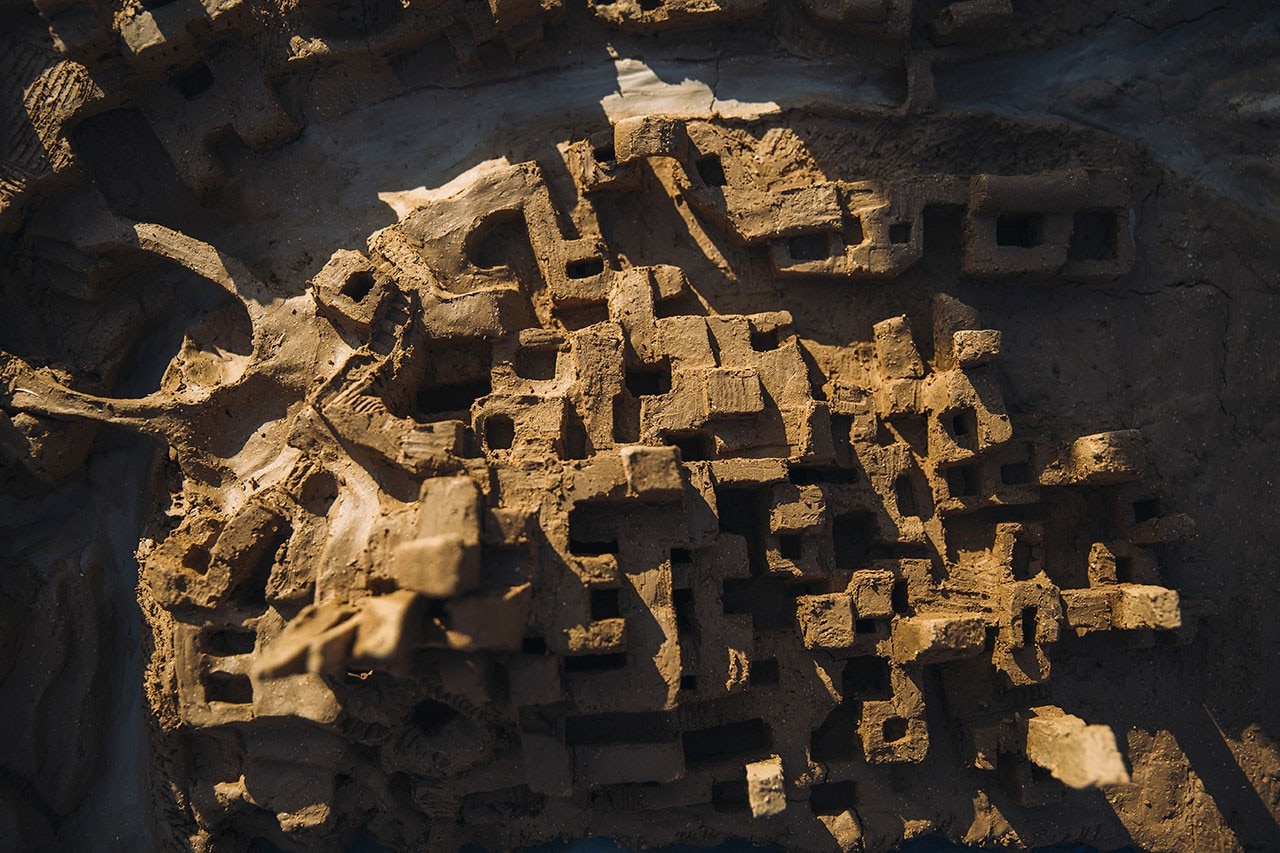
Clay Storming
Workshop sul Clay Storming con Anna Heringer, Domaine de Boisbuchet, 2019. Foto Martina Orska

Clay Storming
Workshop sul Clay Storming con Anna Heringer, Domaine de Boisbuchet, 2019. Foto Martina Orska

Clay Storming
Workshop sul Clay Storming con Anna Heringer, Domaine de Boisbuchet, 2019. Foto Martina Orska

Clay Storming
Workshop sul Clay Storming con Anna Heringer, Domaine de Boisbuchet, 2019. Foto Martina Orska

Clay Storming
Workshop sul Clay Storming con Anna Heringer, Domaine de Boisbuchet, 2019. Foto Martina Orska

Clay Storming
Workshop sul Clay Storming con Anna Heringer, Domaine de Boisbuchet, 2019. Foto Martina Orska

Clay Storming
Workshop sul Clay Storming con Anna Heringer, Domaine de Boisbuchet, 2019. Foto Martina Orska

Clay Storming
Workshop sul Clay Storming con Anna Heringer, Domaine de Boisbuchet, 2019. Foto Martina Orska

Clay Storming
Workshop sul Clay Storming con Anna Heringer, Domaine de Boisbuchet, 2019. Foto Martina Orska

Clay Storming
Workshop sul Clay Storming con Anna Heringer, Domaine de Boisbuchet, 2019. Foto Martina Orska

Clay Storming
Workshop sul Clay Storming con Anna Heringer, Domaine de Boisbuchet, 2019. Foto Martina Orska

Clay Storming
Workshop sul Clay Storming con Anna Heringer, Domaine de Boisbuchet, 2019. Foto Martina Orska

Clay Storming
Workshop sul Clay Storming con Anna Heringer, Domaine de Boisbuchet, 2019. Foto Martina Orska

Clay Storming
Workshop sul Clay Storming con Anna Heringer, Domaine de Boisbuchet, 2019. Foto Martina Orska

Clay Storming
Workshop sul Clay Storming con Anna Heringer, Domaine de Boisbuchet, 2019. Foto Martina Orska

Clay Storming
Workshop sul Clay Storming con Anna Heringer, Domaine de Boisbuchet, 2019. Foto Martina Orska

Clay Storming
Workshop sul Clay Storming con Anna Heringer, Domaine de Boisbuchet, 2019. Foto Martina Orska

Clay Storming
Workshop sul Clay Storming con Anna Heringer, Domaine de Boisbuchet, 2019. Foto Martina Orska
4. Model with your team, but also with your client
Set around the table with your team but also with relevant figures of the project, be it the client, or the future users of the space. First, set up the landscape where to place the project. Try to work by subtraction and not by addition; you can do that by throwing clay on the site and carving and taking away material from it. You can select a proper scale (by using a unit represented by a human figure or by an abstract cube) and remember that scale can change according to the flow. Be free in imagining the space, its interiors, its outdoors. Just remember that everything can be changed, moved and removed.
5. Move around and change perspective
While modelling together, try to switch position every 10/15 minutes, walking around the table and working on someone else’s spot. This allows for a change of perspective and for a better understanding of other people’s visions and needs. It also helps to have a clearer view of the whole, keeping the design balanced. This way of working means that you have to let go the possessiveness of your own ideas, and let others intervene and modify something you have previously done, and viceversa. It is an exercise on trust. You can make decisions together, but it is important to shape things first and discuss them afterwards.

The Clay Storming method is deeply effective as it helps to understand a project in every single aspect, without the limits of a 2D surface (paper or computer). It can be easily applied in groups and it allows to walk around, look through, see how the light interacts with the architecture, how patterns and surfaces change the character of the space, balancing voids and fulls. Once it is completed, the model can be later photographed and used to develop professional drawings, if required.
- Workshop:
- Clay Storming
- Mentor:
- Anna Heringer
- Venue:
- Boisbuchet 2019
- Location:
- Domaine de Boisbuchet
- Participants:
- William Smith, Minttu Peltonen, Solveig Gubser, Maria Manrique, Alba Rodríguez Illanes, Sima Refae, Nona Tsekova, Ko Tsan Chin, Frederick Desimpel, YAN-TING WU, Nicolás Jaime Gemelli, Giulia Rosa, Mügue Yilmaz, Abel Mbaki, Marianna Guernieri






